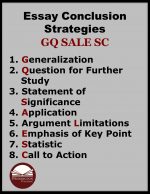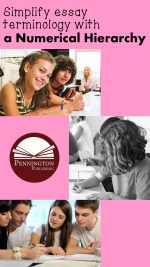How to Lead Effective Group Discussions
Knowing how to lead effective group discussions is a vitally important skill for both the classroom teacher and the corporate executive. Knowing some tricks of the trade will increase student/audience participation and prevent avoidable boredom from rearing its ugly head.
Transitions and Pacing
Transitions between questions are important in leading group discussions. A good group discussion leader builds upon what the audience says of importance and maintains a rhythm and flow to the discussion. A skilled discussion leader knows when to pepper the discussion with brief commentary and when to allow the audience to control the transitions. Audience members can be taught to respond to the previous answer and then move on. They can also be taught to disagree agreeably and avoid an ad homonym argument. Paraphrasing is an important skill that can be practiced in group discussions. Ending the discussion while there is still interest (and hands raised) can be done by announcing, “We can take three more comments.” If the discussion is bombing, end it quickly. There is no use in kicking a dead horse.
Discussion Management
Physical positioning is important when eliciting audience answers. Make sure that responses can be heard by every group member by moving to the opposite side of the room or cupping your hand to your ear or by asking “Can you hear him or her?” to distant audience members. Participants need to know that they are not just addressing the leader, but that they are also speaking to the entire group. Reinforce this by occasionally asking for another audience member to paraphrase someone else’s response. Don’t, however, use this as a weapon to catch those “napping.” Ask, “What do you think about that?” or “Who disagrees with that statement and why?” or “Can someone add to that?”
Frequently, good group discussions can sometimes break into parts, with smaller groups discussing the subject such as in dinner conversation. If planned, or controlled, a “Pair-Share” can be effective; however, if prolonged, audience members will tend to wander into off-topic conversations or distracting behaviors. Usually, the movement of the leader to the location of the conversationalists will frequently extinguish the behavior without interrupting the flow of discussion. Proximity controls behavior.
In a discussion, it is sometimes helpful to alternate between sexes, between those of differing perceived abilities or job functions, or even among different ethnic groups to ensure that all are receive fair hearings. Picking labeled 3 x 5 cards or popsicle sticks (in the school setting) will ensure equitability. Audience members should be forewarned that they might be called upon even though their hands are not raised, so they should practice good listening strategies. Sometimes it is effective to begin a discussion without raising hands with the leader calling upon the audience members. Explain calling on participants without raising hands allows for the leader to fairly choose among all, and that it provides “wait time” so that those who do not think as quickly on a particular question can have enough time to develop their thoughts.
Dealing with over-zealous audience members can present a problem, especially during “wait times.” Interrupt interrupters with comments such as “Let’s give everyone a chance to reflect on this point.” In the school setting, forewarn students that you never pick those who shout “Oooh, ooh, ooh,” “Pick me, pick me!” or wave hands. Students who raise their hand too often can be assigned a limited number of “discussion star” moments per discussion to prevent their monopolization of the discussion.
Modeling Appropriate Discussion
Body language is extremely important in a discussion leader. Communicate openness and good listening skills by making eye contact, not turning your back on the speaker, and listening to the entire train of thought. Interrupt only if the speaker is off target or goes on a tangent. Avoid folding your arms or putting your hands in your pockets. By not repeating student answers, we stress the importance of a student-centered discussion. This also forces students to listen to each other. Occasionally it will be important to translate or even paraphrase a particularly long student response, but do so sparingly. Ask others to do this, if necessary. Encourage participants to make eye contact with each other by reminding audience members to “talk to them, not just me.”
Praising and Correcting
Praising should be catered to the response, rather than to the individual. Specific praise that teaches is better than a general blessing. For example, “I like how you compared such and such to the idea in the last chapter” is better than “Super, duper, most excellent answer!”
Incorrect responses need to be dealt with honestly, clearly and quickly. Group discussion leaders who strive to maintain the self-esteem of the individual by praising or validating incorrect responses run the risk of confusing the participant and the rest of the learners and disrupting the scaffolded nature of a well-planned group discussion. It is better to say a simple “No,” than “Not quite,” “Good try,” or “Can someone add to that?”
Getting the Whole Group to Participate
It is important to develop a consistent “wait time” to allow and encourage the whole group to think through an answer after each question. Easier questions need less wait time than harder ones. This models careful, considered thought, rather than, as many group discussions are all too often a race of the quick wits. Allow silence to be understood as a normal course of events in a discussion. Fill the silence only to clarify a question, if you believe that it was not understood, or to encourage more participation. How long of a “wait time” is a matter of teacher judgment. As a rule of thumb, if at least half of the hands are not raised in the group, then there is a problem in the question sequencing, question wording, or the perceived pay-off is not worth the effort.
Regarding pay-off, audience members need to know that their participation in class discussion is an important part of their overall grade* or evaluation. Otherwise, many audience members will avoid participation or perceive the group discussion as being of minimal importance. In the school setting, rewards such as grades, extra credit, treats, stickers, privileges are all weapons which the creative teacher can employ to motivate class participation in discussions. In the business setting, clever discussion leaders can also provide rewards. Short term, explicit rewards tend to work better than long term ones.
*In the classroom, one pay-off method that words well is to have a graded discussion in which the teacher selects a student recorder to score the points earned. This frees the teacher up to lead the discussion without worrying about properly crediting responses. After a correct student response, the teacher signals the recorder with the forefinger and the recorder places a tally mark next to the name of the student. If the response is particularly insightful or directly responds to the response of another student, the teacher may signal two fingers, for two tally marks. The latter must, of course, be accompanied by a resonating class “oooh!” A good feature of this technique is that it tracks student responses. During class discussion, the teacher can survey the hash marks to determine who is failing to contribute or contributing excessively. It is also a very objective means of grading such a subjective student performance area. Students tend to perceive this graded discussion as being quite fair.
Using a Common Language of Discussion
Teachers find that using a common language of discussion promotes focused group discussion. For English language-arts teachers, check out the SCRIP Comprehension Strategies (FREE bookmark download below). Included in the author’s popular Essential Study Skills (What Every Student Should Know), the SCRIP acronym stands for Summarize, Connect, Re-think, Interpret, and Predict. Perfect for prompting focused discussion.
To summarize the author’s argument…
I connect Marci’s point to what David said…
One way to re-think what the character says is…
I interpret this to mean…
I predict that the outcome of these actions will produce…
How to Grade Literary Discussions
So, how can a teacher design discussions, especially literary-based analyses, to hold students or colleagues accountable for their preparation and participation? Check out this related post.
The author’s Essential Study Skills is the study skill curriculum that teaches what students need to know to succeed and thrive in school. Often, the reason why students fail to achieve their academic potential is not because of laziness or lack of effort, but because they have never learned the basic study skills necessary for success. The 56 lessons in Essential Study Skills will teach your students to “work smarter, not harder.” Students who master these skills will spend less time, and accomplish more during homework and study time. Their test study will be more productive and they will get better grades. Reading comprehension and vocabulary will improve. Their writing will make more sense and essays will be easier to plan and complete. They will memorize better and forget less. Their schoolwork will seem easier and will be much more enjoyable. Lastly, students will feel better about themselves as learners and will be more motivated to succeed. em>Essential Study Skills is the ideal curriculum for study skill, life skill, Advocacy/Advisory, Opportunity Program classes. The easy-to-follow lesson format of 1. Personal Assessment 2. Study Skill Tips and 3. Reflection is ideal for self-guided learning and practice. Contact the publisher for affordable site licenses.
















